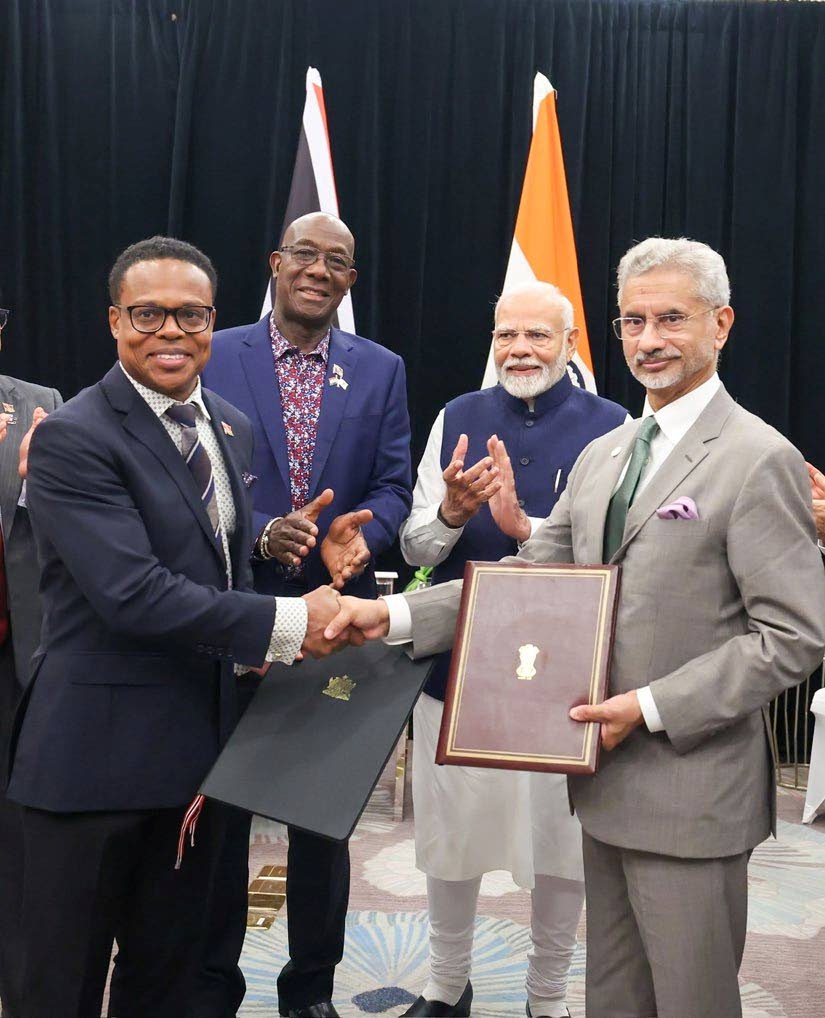Pitr Paksh: Fortnight of gratitude to our ancestors
Written by Newsday on September 21, 2024

SURUJRATTAN RAMBACHAN
PITR PAKSH has arrived once again to remind us about the value of gratitude to our ancestors for the foundations they laid to facilitate our growth and success. Ours is a duty to add value to their contributions and to what they have bequeathed to us. Ours is a duty to hand over to the future what we inherited, but before we do so to have added value to it so that it is handed over with much improvements and sustainability.
But apart from the value of gratitude to them, Pitr Paksh is an annual opportunity for us to engage in planning for our future and for the generations of tomorrow who we will give birth to. Too few people take time to plan their lives, but more significantly how they use time. Time is a wasting asset. It is never recovered. Pitr Paksh, by reminding us about our ancestors and how they used time, also challenges us to review what we have used and continue to use our time on earth.
Pitr Paksh is a period of personal and family, one may even say community, reflection that seeks answers to the following questions about our ancestors and then applying those questions and answers to our own lives:
* From where did they come, and not just geographically?
* What did they have and/or how and what did they create that facilitated their growth, survival, community and personal wealth?
* How did they use time and created wealth?
* What was the vision they had for themselves, their children and the community?
* What did we gain from them?
* What have we done and what are we going to do with what we gained from them?
Understanding our family’s social history is very important. In the 15 days of Pitr Paksh we need to reflect on our lives. Have we used the gift of life and our ancestral gifts wisely and productively? Are we happy and satisfied with where we are today? Why are we where we are today? What do we wish to achieve over the next year? The next five or ten years? How are we planning to use our time on earth?
The Hindu tradition identifies four stages of life for a Hindu. The first stage is that of the student or bramhacharya. It is during these first 25 to 30 years following birth that we are tasked with developing ourselves educationally and skillwise to enter the second stage of life, which is called the Grihastya or the married householder state, which lasts up to about 60 or 65 years of age.
In this stage we earn money, we contribute to society, we build the community, we support the mandir, we build a family and educate them secularly and spiritually to take their place in the world and make their contribution.
And then we enter the stage of semi-renunciation (vanaprastha). In this stage we are expected to delve deeper into answers to the questions who am I and what is my destiny. It is the period of deep reflection on the meaning and purpose of life. It is the stage where we begin to hand over responsibility to our children to take care of what we have built up and protected.
At this stage we begin to realise that we are really caretakers of everything we own and that we will have to hand it over. It is the stage where we develop responsibility in our children and ensure that they will protect our legacy. It is a stage of major transitioning.
Many families cease to exist and fade away when such transitions are not deliberately planned and facilitated. It is an age of active mentoring and leadership development. Many families lose their wealth because children who inherit have not been taught to value it.
And then when we are sure that the transition is achieved we enter the stage of the sanyasin, the full renunciation. The sanyasin stage is a stage of renunciation of development detachment, of reducing greed and the other behaviours that inhibit our spiritual growth.
Life is a journey from humanity to divinity. Detachment does not in my view mean dispossession. It means understanding that attachment breeds sorrow and disappointment and that one should be aware of this in one’s relationships and in one’s attitudes to material possessions.
Sanyasin is a time to continue to work to eliminate karmic effects of past lives and to know that one remains in the cycle of births and deaths due to unexhausted desires brought over from previous lives.
All of these thoughts and reflections are also a significant part of these 15 days. As a final word during this time we offer prayers and give charity on behalf of our ancestors. It does assist them. Anything we do on behalf of another alive or dead assists those people.
Incidentally, on one of these 15 days food is cooked and placed for the departed. There is a greater social meaning to this. This tradition ensures that the extended family is brought together at least for one day in the cause of family unity and shared support.
What a wonderful tradition is Pitr Paksh.
The post Pitr Paksh: Fortnight of gratitude to our ancestors appeared first on Trinidad and Tobago Newsday.




